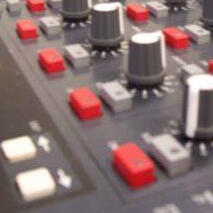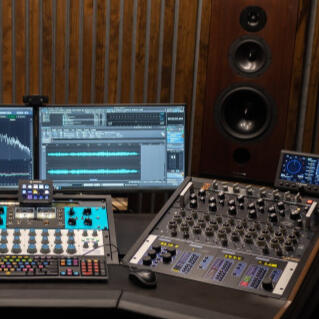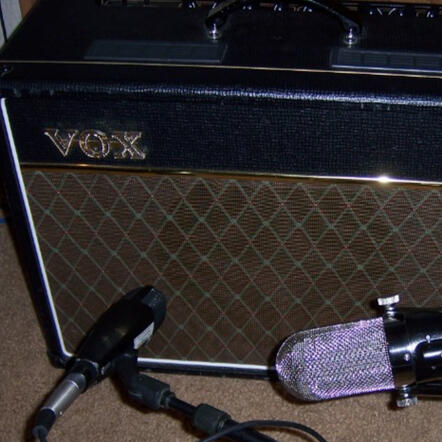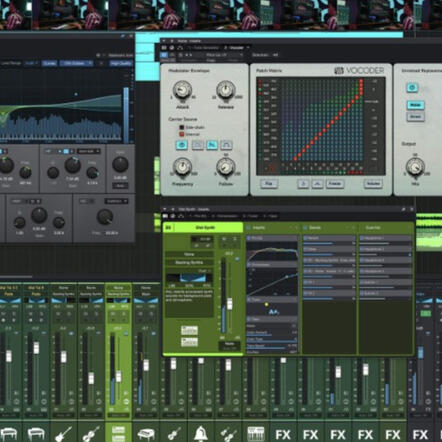I mix songs
Guitarist, Producer, Mixing and Mastering engineer with 30+ years of experience
What I Do

As an experienced mixing engineer and music producer with over 30 years in the industry, I focus on making your music sound amazing. I specialize in high-quality mixes and masters that bring out the best in your sound.Whether you're an indie band, solo artist, or signed to a major label, I offer personalized services like mixing, mastering, editing, vocal tuning, and production.My goal is to give you a final result that goes beyond your expectations and makes your music shine.
Services
Get High-Quality Mixes FastAre you stuck making endless changes to your track, delaying your release and feeling frustrated?Does your mix sound great in the studio, but not so good in your car or on your friend’s headphones?Have you hired a top mixing engineer, only to find out they gave your project to an intern, making you feel like you don’t matter?With over 30 years of experience and the best gear, I make sure your mix sounds great everywhere. I also deliver the first version fast, often within hours. I handle every project myself, so your music gets the care it deserves without endless fixes.Ask about the "Zero Risk Service" for new clients!
Contact Me
Feel free to contact me to discuss your project.
For first time clients, I offer a Zero-Risk service. Contact for more details.
Please use the form below or contact me on my socials
For more of my ramblings and a better blog experience make sure to check out my Medium PageThoughts On LoudnessThe loudness wars has been a hot topic for the past 30 years or so. The rush to become the loudest song on the radio (or-pre normalization online platforms) has caused a time where records would be devoid of dynamics, and were narrowed into a certain frequency range that human ears deemed as “loud”.I won't name names, but there are some pretty infamous tracks from mega artists that are notorious for this.Before moving forward I’d like to define “loudness”. Loudness is both the level of volume AND the frequency distribution of a particular song. We do have metering tools that allow us to measure the LUFS, RMS levels of a music piece and the frequency distribution very accurately. However the best measure I find is still by ear — as I am yet to find a tool that correllates 100% to what I perceive when I’m listening to a track. The measurements of two tracks can be identical, but yet one might still sound bigger, louder, more open and more exciting.How does this happen? Well as anyone who has dabbled in producing music has learned, mixing is a process where you make a thousand small decisions and those decisions make up the mix. The EQ settings of the tracks, the amount of compression (or lack thereof) and time based effects such as reverbs and delays etc all contribute to the loudness of a track.I get it when people complain about lack of dynamics and songs being squashed and distorted in the name of loudness.However, its not 1999 anymore, and we have much better tools to get to what I consider “loud” and even to “crazy loud” teritorries easily and cleanly.If we still had to rely on Waves L1 and similar limiters, yes I would also stay away from pushing my mixes/masters to -6 lufs or so. However in the modern age of audio tools, we have many many better tools that allow us to get a loud mix and frankly the tradeoff is very acceptable.That being said, I see people (artists & mixers) still try to employ techniques that were used in the 1970s and 80s and try to attain a modern sound with industry standard loudness.This doesn’t work. When you mix constraining yourself to limitations that were a part of the process in the 1980s, you’ll get a 1980s sound. Which is fine if thats what you’re going for and its intentional.But to mix a track with limitations that are no longer relevant in 2020s and expect it to sound like it was indeed mixed in the 2020s will quickly reveal itself to be a folly.One thing I can recommend to anyone trying to get a loud mix is to ditch analog emulating channel strips.1-The knob turning interface does not make sense on a screen.2-You have less control over parameters.3-You have less freedom to shape the sound.4-It (might) prevent you from making drastic moves.What I suggest instead is to use plugins that were designed from the ground up with no thought given to carrying baggage from a hardware device that was created 50 years ago.You need an EQ? Fabfilter ProQ3 is what I use and find it to be the best on the market. There are several close seconds such as Kirchhoff or Infinity EQ from Slate Digital. Eiosis also has an excellent EQ (still has a knob interface though).You need compression? Again Fabfilter, DMG provide excellent compressors that have a modern interface and allow several models if you like the behaviour of a particular unit (such as a Teletronix LA2A — Opto compression) without the limitations and offers much more control.Same with gates. Fabfilter or DMGfor instruments, Sonnox Drum Gate for drums. Amazing tools.You want to add saturation and harmonics similar to what analog mixing desks introduce? There are many free and paid saturation plugins that let you add harmonics and give you a lot of control over the parameters. Again Fabfilter Saturn 2.You need de-essing? Fabfilter, DMG, Sonible, Eiosis make excellent de-essers.You now have a full channel strip that gives you a lot more control over every aspect of processing.I suggest you challenge yourself to do a few mixes using only plugins that have a modern, “built for digital” interface and see if you really miss your SSL emulation.One thing I can guarantee this approach will bring you is the freedom from the “most accurate ever model of <insert analog device>” tail chase. Those analog devices were limited. The engineers and artists back in the day had to work a lot more to circumvent these limitations.In most cases you are not seeking that particular sound, but you like the actual song itself (the music and lyrics move you and the recording doesnt really get in the way) — I posit that if that particular song was written today and mixed on a laptop, you’d enjoy it the same — and it would probably sound better.



